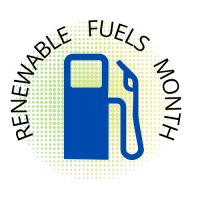People are exposed to chemicals, like benzene, primarily by breathing air that contains it.
To reduce your exposure:
- Limit gasoline fumes.
- Pump carefully and choose gasoline blended with ethanol.
- Limiting the time you spend near idling car engines can help lower your exposure to exhaust fumes, which contain benzene (as well as other potentially harmful chemicals).
According to Cancer.org, benzene is known to cause cancer. The link between benzene and cancer has largely focused on leukemia and other cancers of blood cells. Read more here.
What do regulatory agencies say about ethanol’s positive benefits?
The Center for Disease Control (CDC) says benzene causes cells not to work correctly. For example, it can cause bone marrow not to produce enough red blood cells, causing anemia. Also, it can damage the immune system by changing blood levels of antibodies and causing the loss of white blood cells. Another major source of benzene exposure is tobacco smoke.
The EPA limits the percentage of benzene allowed in gasoline to an average of 0.62% by volume (with a maximum of 1.3%). In 1978, the EPA’s Clean Air Act waiver allowed the use of 10 percent ethanol in gasoline, known as gasohol or E10, to support this. This change was made largely in part to the efforts of the founding members of the Nebraska Ethanol Board!
According to the EPA, ethanol’s high octane value has allowed refiners to significantly reduce the aromatic content of the gasoline. To be exact, increased ethanol in gasoline allowed the United States to reduce the total volume of aromatics in gasoline from about 25% in 2005 to about 20% in 2016. High-octane ethanol blends also improve vehicle performance and efficiency. Why is octane important? The Urban Air Initiative explains it here.
EPA’s gasoline standards programs are designed to address ground level ozone or “smog” and to reduce toxic emissions from the fuel burned in cars and trucks. Smog threatens the health of millions of Americans each year, and is particularly dangerous to children and individuals with respiratory problems. As a result of EPA’s regulatory programs and various state regulations, gasoline sold today in the U.S. is far cleaner than gasoline produced in previous decades. In 2022, the EPA set the highest blend mandate yet at 15 billion gallons. To better understand how ethanol reduces smog formation, check out this video where our administrator and chemical engineer, Reid Wagner, explains the science behind it.
Almost all of the gasoline supplied in the U.S. today contains 10% ethanol. Ethanol that meets certain requirements can be considered a renewable fuel under the EPA’s Renewable Fuel Standard Program.
In June 2011, the EPA approved blends of 15% ethanol in gasoline for use in model year 2001 and newer passenger cars, light-trucks and medium-duty vehicles.
The University of Nebraska-Lincoln, with support from the Nebraska Ethanol Board, is currently working with the EPA to demonstrate the efficiency and benefits of approving even higher ethanol blends for vehicles. Learn more about the E30 demonstration here.
E85 is a blend of gasoline and denatured ethanol containing up to 85 percent ethanol and is the highest ethanol fuel blend available in the market. The EPA allows E85 to be used in flex fuel vehicles (FFVs) which are specifically designed to run on this fuel or any gasoline or ethanol blend ranging from E0 to E85.
Expanding use of E85 as a vehicle fuel would increase use of renewable fuel and reduce dependence on imported oil. According to the EPA, E85 can also provide important reductions in GHG emissions as compared to petroleum-derived gasoline or lower volume ethanol blends.


